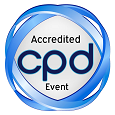
Shiwen Huang
Professor
Title: The effects of nanomaterial (Nanotechnology Devices) treated water on the pathogens of rice diseases and fungicides
Biography
Biography: Shiwen Huang
Abstract
Various fields, such as medical devices, imaging, sports, biosensing, electronics, drugs, environmental cleanup, cosmetics and sunscreens, textiles, agriculture, and food processing have employed the successful and safe use of nanotechnologies (nanomaterial). However, due to fewer investments being made in agronomy, nanotechnologies have so far been less developed in agronomy than in other disciplines. Currently, their potential use in agriculture, especially for plant protection and production, is an under-explored area in the research community. Nanotechnologies have the potential to improve agricultural production, and to also revolutionize the existing technologies used in various sectors, including agriculture. Nanotechnology may provide concrete solutions for many agriculture-related problems, such as insect pest management programs which currently use traditional methods, as well as the adverse effects of chemical pesticides. Nanomaterial in different forms can be used for the efficient management of insect pests, as well as the formulations of potential insecticides and pesticides. The seed germination rates were increased, growth of crops were promoted, and yields and quality of crop products were increased by using nanomaterial (nanotechnology) for the treatment of seeds. Similarly, when using different energies of nanomaterial (nano-devices) treated water (NMTW) to treat rice diseases pathogenic fungi, the growth rate of fungal colonies (hypha) were promoted. The fungicides were diluted with NMTW, and their functions were significantly improved and enhanced, which inhibited the efficacy to the pathogenic fungi. In this study, the effects of rice disease pathogens treated with NMTW on rice blast Pyricularia oryzae, rice sheath blight Rhizoctonia solani, and bakanae disease Gibberella fujikuroi were assessed. When compared with sterile water, the growth rate of the R. solani was increased from 0.83 to 11.86%, and 0.77 to 11.57% after being treated for 24 and 48 hours, respectively. The growth rate of the P. oryzae increased from 6.42 to 15.00%, and 4.92 to 11.86% after being treated for 96 and 120 hours. In regards to the G. fujikuroi, the growing rate increased from 6.69 to 11.57%, and 1.75 to 5.54% after being treated for 72 and 96 hours, respectively. The Jinggangmycin (a type of biological fungicide) was diluted with the NMTW, and then compared with those diluted with sterile water. When the Jinggangmycin was diluted 1000-fold and 600-fold, the growth inhibiting rate for the R. solani (diluted with the NMTW) increased from 8.08 to 29.48%, and 7.23 to 32.53% compared with that which was diluted with sterile water, respectively, after being treated for 24 hours. The growth inhibiting rate for the R. solani (diluted with the NMTW) increased 30.94 to 63.09%, and 59.81 to 72.13% compared with that which was diluted with sterile water, respectively, after being treated for 48 hours. The isoprothiolane was diluted with NMTW, and then compared with that which was diluted with sterile water. It was found that when the isoprothiolane was diluted 1000-fold and 600-fold, the growth inhibiting rates of the P. oryzae (diluted with the NMTW) increased 9.03 to 27.53%, and 2.78 to 29.30% compared with that which was diluted with sterile water, respectively, after being treated for 72 hours. The growth inhibiting rate of the P. oryzae which was diluted with the NMTW increased 19.70 to 32.50%, and 24.11 to 38.89% when compared to that which was diluted with sterile water, respectively, after being treated for 120 hours.

